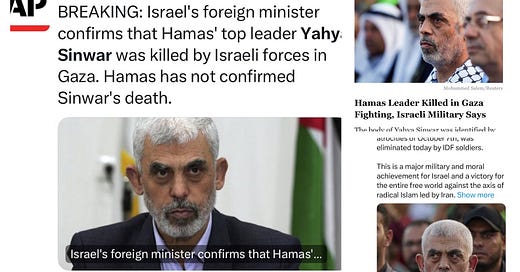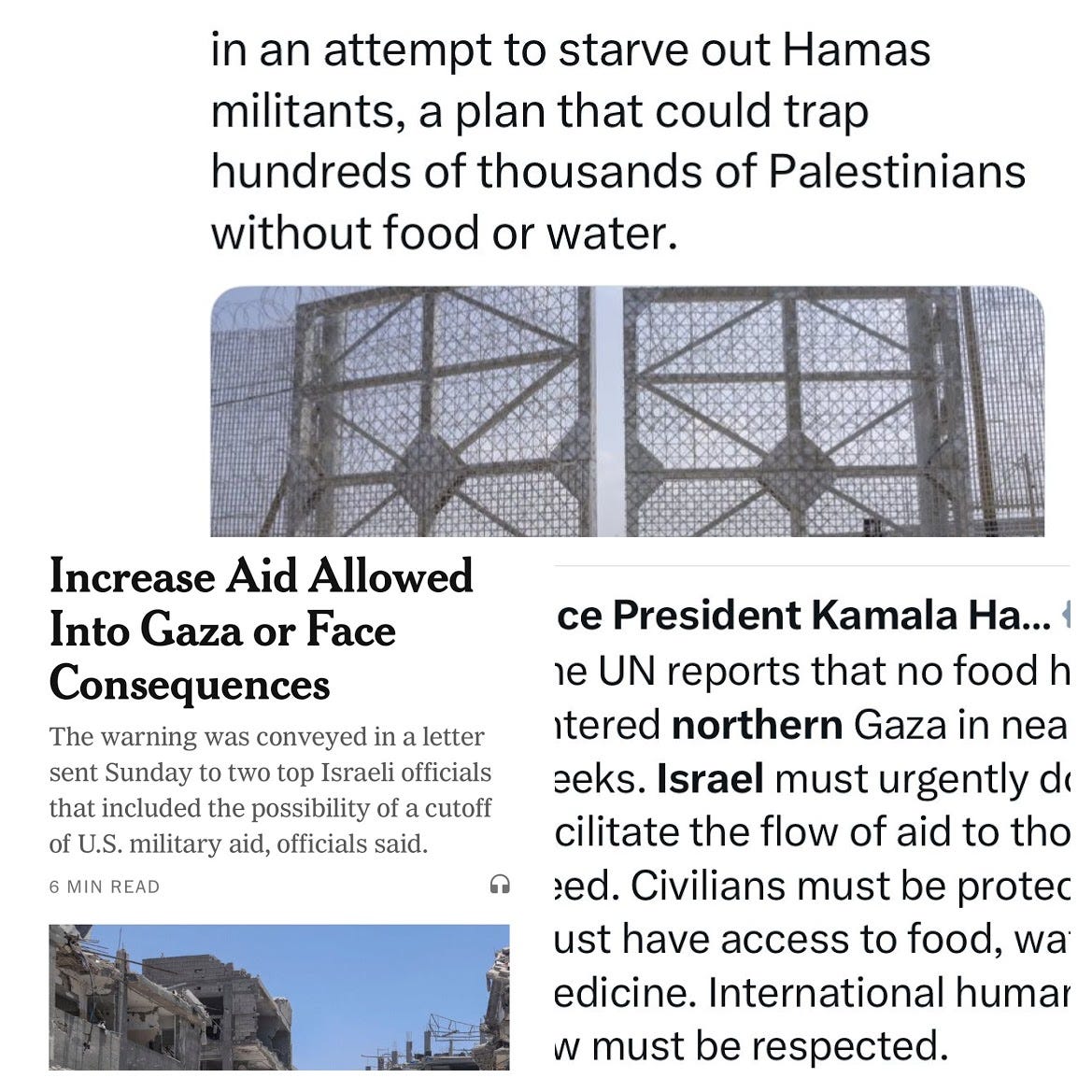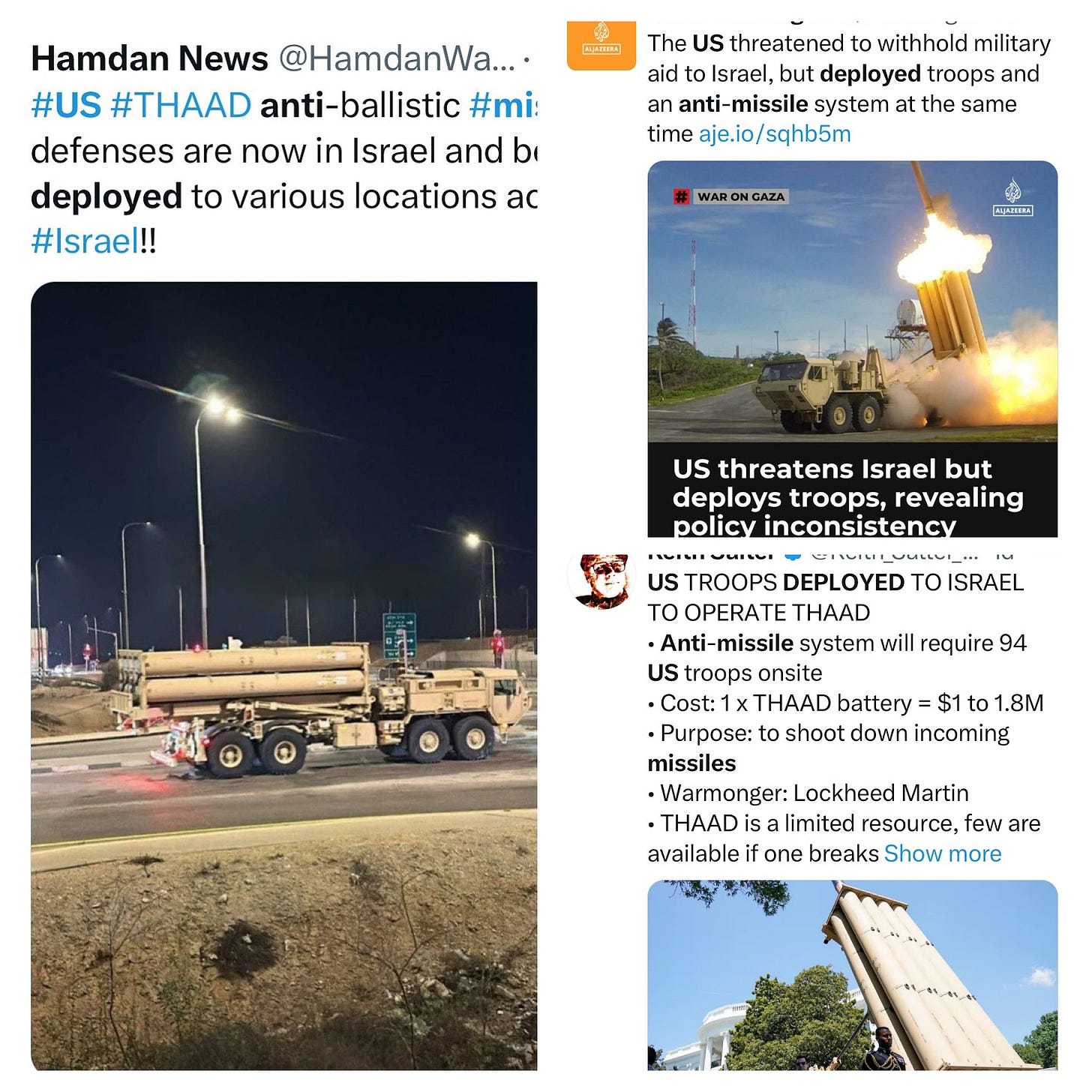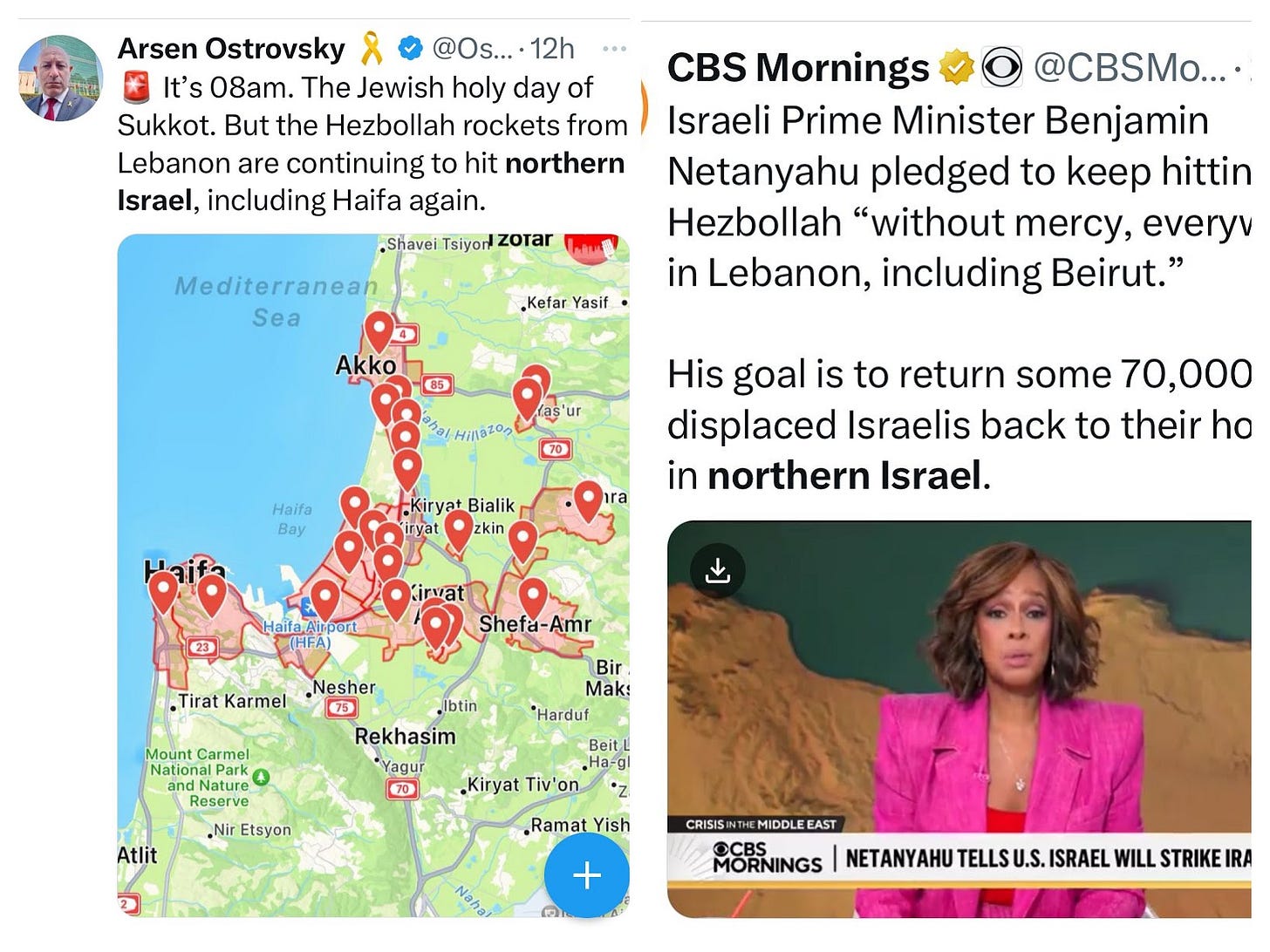Israel at War - Day 378
1. Israel Kills Hamas Leader in Gaza, Yahya Sinwar
An Israeli military unit, maneuvering in the southern Gaza Strip, managed to kill the senior Hamas leader. The army unit was operating in a two floor house in the area. An Israeli drone caught on video a wounded person sitting on a sofa, with his face covered to avoid identification. He managed to throw a stick at the drone. Shortly after, an army unit shot a tank shell at the building, killing him. The following day forces entered the building to search it. They took a photo of the man that they thought resembles Sinwar. Soon after they posted the photo, they took the body for identification. They sent a photo of his face for confirmation. A DNA test confirmed that it was Sinwar. Sinwar served time in an Israeli prison for years, on charges of murdering Palestinians who he thought were collaborating with Israel. He was released in a hostage exchange deal for Gilad Shalit, an Israeli soldier who was held captive in Gaza from 2006 for five years. PM Netanyahu was prime minister when the deal was signed and Sinwar was released. PM Netanyahu was also responsible for keeping Sinwar and Hamas in power for all those years, when he enabled Hamas to be fully funded by Qatar. Sinwar spoke fluent Hebrew that he learnt while in prison. He also was cured of brain cancer by undergoing surgery in an Israeli hospital. Sinwar was the top human target for Israel. He was the brain, the visionary and the senior commander of the October 7th attack and massacre. He was seen by some Israeli hostages when they were kept in the tunnels in Gaza. After his killing it seems that Israel has managed to eliminate the most senior ranks of Hamas.
In a brief video message, PM Netanyahu announced that this was a great achievement for the Israeli army, he added that the war is not over yet, and that Israel still strives for a total victory. PM Netanyahu has not agreed yet to open for disccussion “the day after”, who and how will Gaza and the Palestinians be governed when the war is over.
President Biden and VP Harris both expressed their satisfaction with the achievement, adding that this is the time to end the war and restore Gaza.
The families of the hostages issued a statement in which they expressed their satisfaction at the elimination of Sinwar, but also expressed deep stress and concerns about the fate of their loved ones. 101 Israeli hostages, living and deceased, are still held captive in Gaza. There is no indication of where they are or which of them are still alive. Some intelligence sources estimate that fifty are still alive.
2. Israel Resumes Admitting Humanitarian Aid into Gaza Following Warning from US Administration
In a letter addressed to the Israeli Ministers of Defense and Strategic Affairs, Secretary of State Blinken and Secretary of Defense Austin demanded that Israel take steps within 30 days to improve the humanitarian situation in Gaza, or risk losing U.S. military aid to Israel.
In the statement to reporters in Washington DC, following the delivery of the letter, the State Department spokesperson Miller said that the U.S administration has seen a dramatic decline in the level of humanitarian aid entering Gaza in the past few months, and added: “in fact, it has fallen by over 50 percent from where it was at its peak.”
The following day, the IDF reported that it allowed 50 trucks carrying aid into northern Gaza, in accordance with the Israeli government's decision. The aid trucks, coming from Jordan, carried food, supplies, water, medical equipment, and shelter equipment. Israeli Ambassador to the UN, Danon, said that "Israel remains committed to working with our international partners to ensure aid reaches those who need it" in Gaza.
However, media reports, quoting aid agencies in Gaza, say that the recent aid delivery is but a small fraction of what is needed to offset a severe hunger crisis in Gaza, especially in the northern part of the strip. U.N. World Food Program officials said that “people have run out of ways to cope, food systems have collapsed, and the risk of famine is real.”
3. America Sends THAAD Anti-Missile System to Israel
American involvement in the daily Israel military campaigns in Gaza and Lebanon, deepens. Senior American officials from the US army and other federal agencies are making enormous efforts to control Israel to prevent a full scale regional war. On the other hand, the US administration continues to support Israel and help the country not only survive multiple threats coming from multiple countries and directions from Iran, Hizbollah in Lebanon, Hamas in Gaza, and the Houthis in Yemen, and forces in Iraq, and of course armed Palestinians in the West Bank. Right now it seems that the Americans are preparing to support Israel with the expected Israeli retaliation against targets in Iran. This will probably cause a response by Iran, which will need a deeper and broader interception system. As a result the US deployed advanced systems operated by American troops. This marks an unusual occurrence of American troops deployed in Israel to help defend Israel.
4. Hezbollah Targets IDF Base Inside Israel, Killing Four, Injuring More than Sixty
Four Israeli soldiers were killed, and more than sixty were injured in a Hezbollah drone attack on a military base in central northern Israel, some 60 kilometers from the Lebanese border. This, after Israeli air defense systems failed to track the drones course and intercept it.
This was one of the bloodiest Hezbollah attacks since last October, and the deadliest attack on an Israeli military installation inside Israel. All four slain soldiers were nineteen years old, and all were undergoing infantry training at the base. Eight soldiers were severely injured. A total of more than sixty were injured.
In a statement, claiming responsibility for the drone attack, Hezbollah said it had targeted the location, the Golani Brigade base, of an IDF infantry unit deployed in southern Lebanon. The statement came shortly after Hezbollah released a recorded statement from its slain commander, Hassan Nasrallah, in which he called for the militant group’s members to “defend your people, your family, your nation, your values and your dignity.”
PM Netanyahu visited the Golani Brigade base the day after the attack and vowed to “continue to mercilessly strike Hezbollah in all parts of Lebanon - including Beirut."
5. Northern Israel Under Intensive Missile Attack
All towns, villages, communities, and kibbutzim located in the northern part of Israel, including the city of Haifa, have been under severe and intense missile attacks in the last few days, since the Israeli army started the ground operation in southern Lebanon, intensified the military pressure on Hezbollah’s senior leaders, and used targeted killing methods to eliminate all officers in the chain of command of the Islamic organization in Lebanon.
Tens of thousands in Israel were instructed to stay close to safe rooms and shelters, schools were closed and the Home Front Command instructed people not to gather in big numbers, limited public events etc. On the other hand, it is important to mention that the vast majority of missiles were intercepted by anti-missile mechanisms, many of them developed in Israel and the US, and delivered to Israel by and from the US. It is also important to emphasize that the human casualties are still significantly low, in comparison to the huge amount of missiles shot by Hezbollah, Iran, Iraq, and the Yemenite Houthis since October 7th 20023.
Hezbollah still will not cease fire or surrender, despite the fact that Israel has killed its long time leader, Hassan Nasrallah, his successor and other senior officials in the organization, and even killed some Iranian support operators in Lebanon. Hezbollah announced that it will end the war only when and if Israel ends the war in Gaza.









